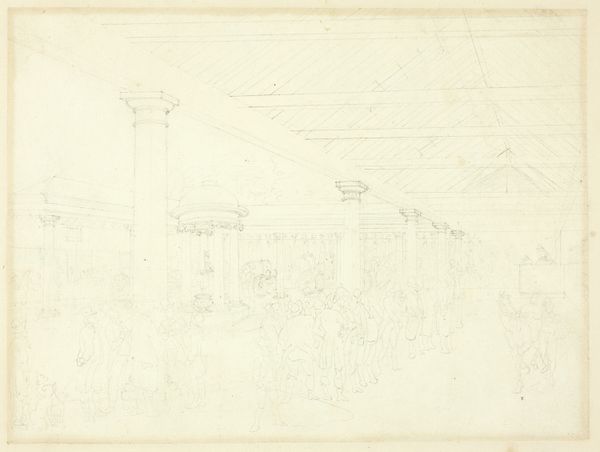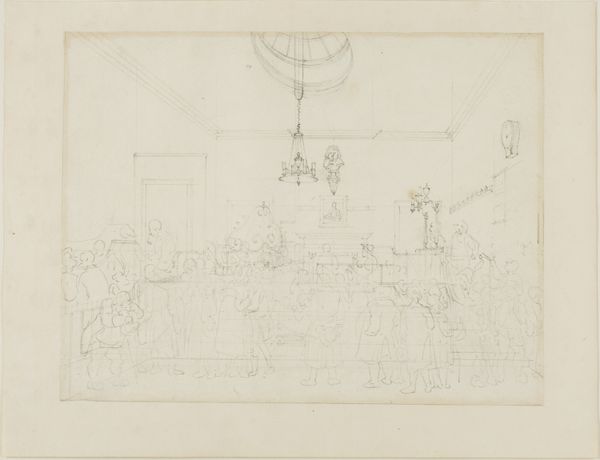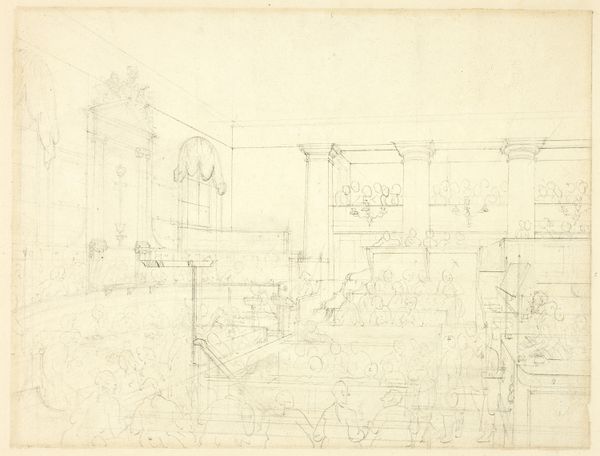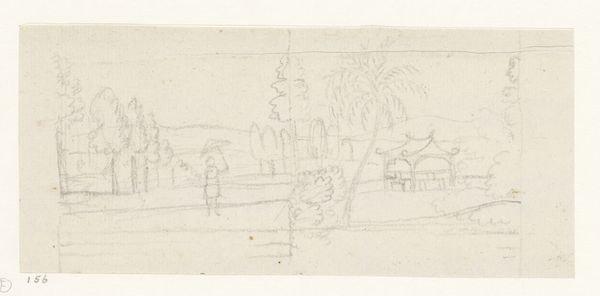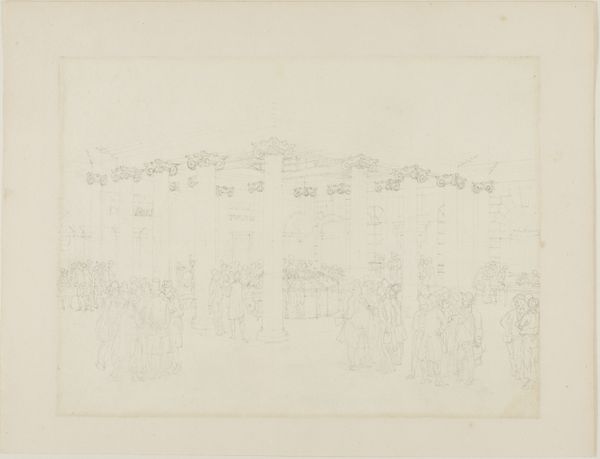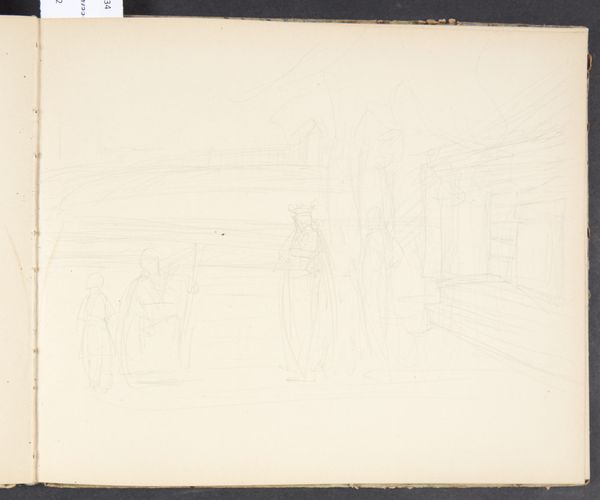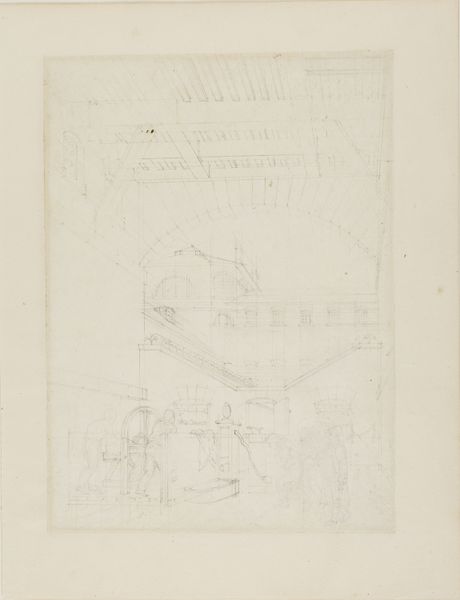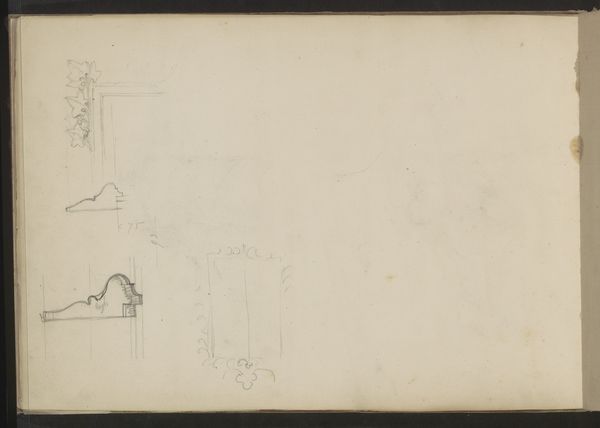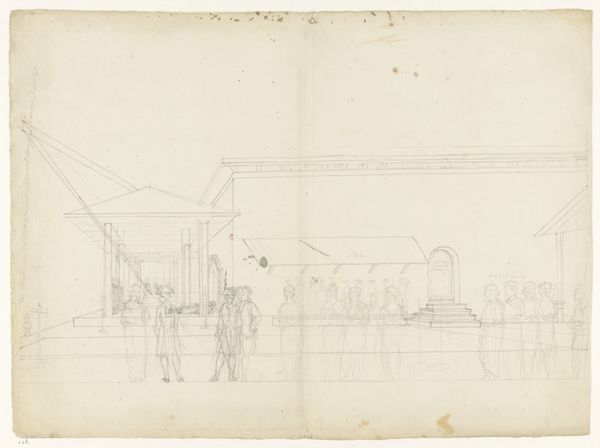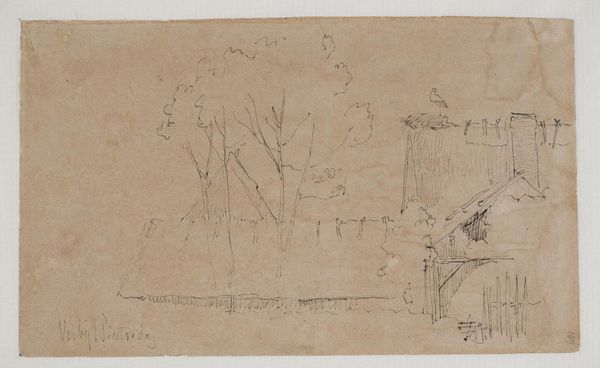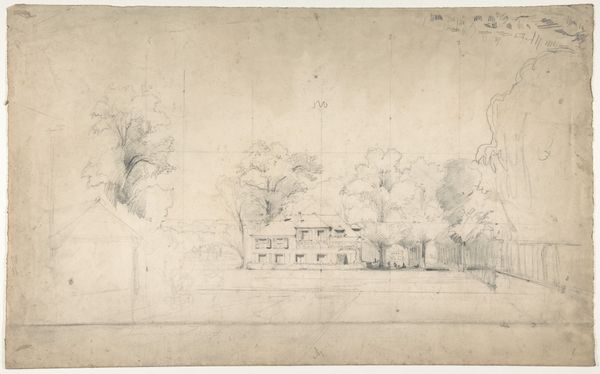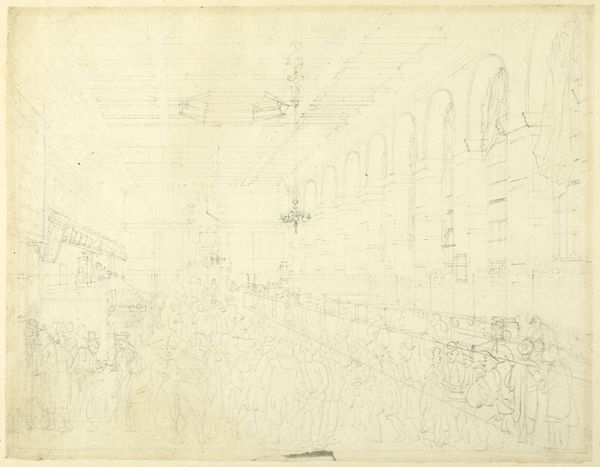
drawing, print, paper, pencil, graphite
#
drawing
# print
#
landscape
#
etching
#
paper
#
pencil
#
graphite
#
history-painting
Dimensions: 196 × 259 mm
Copyright: Public Domain
Curator: This is Augustus Charles Pugin's "Study for Dining Hall, Asylum," created around 1808 using graphite, pencil, etching, and paper. Editor: The fragility of the drawing style conveys an emptiness despite the numerous figures in the composition, which echoes the supposed emptiness of lunacy. Curator: Pugin was deeply interested in architectural representation. He was meticulous with details, from the skylights and pendant lamps to the tables and chairs. His skill here reminds us of his larger social project to chronicle British buildings of note. Editor: It looks as though we're glimpsing inside a space meant for control. The even distribution of bodies at symmetrical tables lends itself to institutionalized oversight and routinization. I'm intrigued by the presence of two ghostly figures to the side, floating outside of the asylum's order. Curator: That order also speaks to emerging ideas about reform and treatment of mental health patients during this period. Places such as asylums shifted to structures offering rehabilitation and occupational activities for residents. The scene implies the rituals of dining as therapeutic practice. Editor: Yet the light sketching technique makes one wonder what Pugin, and perhaps by extension, society, sought to erase through "treatment". And by looking closely at Pugin’s materials—graphite, pencil, and paper—we see not a definitive portrayal, but a process, an attempt to translate what he has observed, but at a remove, on paper. Curator: Indeed. There's a tension here between representation and reality. Editor: Agreed, Pugin gives us something about process. What happens inside of an asylum—what *is* an asylum? Curator: I appreciate how this study complicates those questions. It underscores the multiple layers involved when trying to visualize the workings of an institution, and the historical moment of its image making. Editor: This sketch serves to remind us that these structures, both physical and conceptual, are never finished, always in progress.
Comments
No comments
Be the first to comment and join the conversation on the ultimate creative platform.

